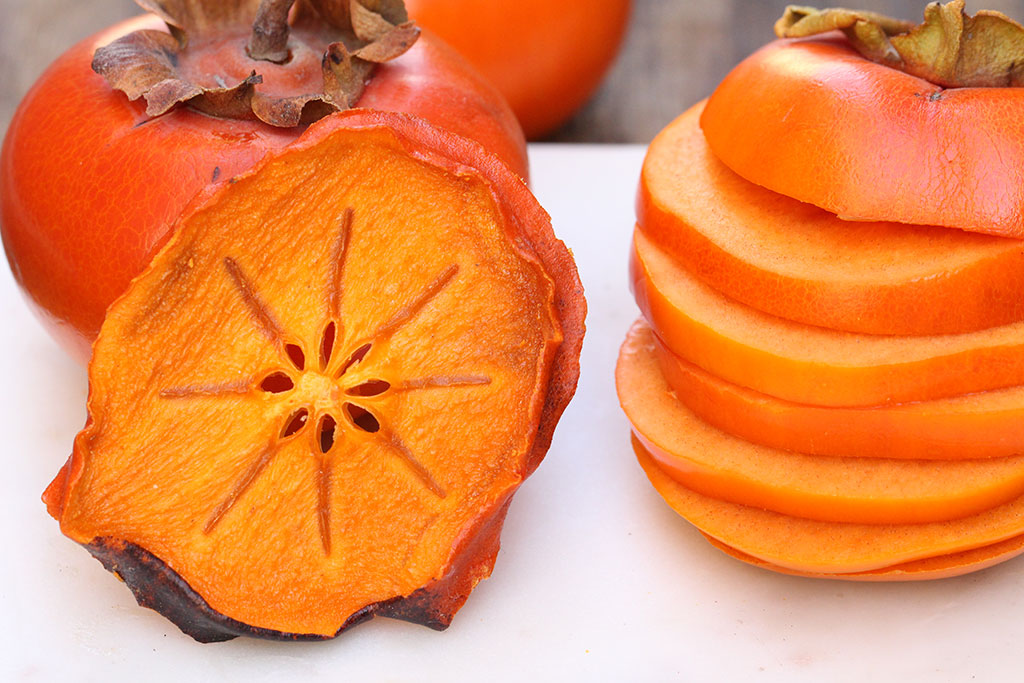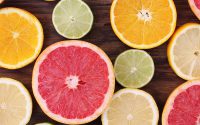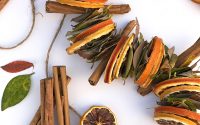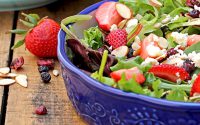Persimmons: Did you know?
California Persimmons – A Brief History:
The most common varieties of persimmons in the United States are the ‘Hachiya’ and ‘Fuyu’ (01). They were introduced in the mid-1800’s when they were brought over from Japan by Commodore Matthew Perry (02). He is responsible for opening trade between the United States and Japan (03). These two varieties are now California cultivars (04). They’re both native to China and were introduced to Japan in the 7th century (05). While there are hundreds of different varieties of persimmons worldwide (06), it is the Hachiya that we are most familiar seeing around more in the U.S. In fact, the Hachiya owns about 90 percent of the commercial persimmon market altogether (07).
Depending on the variety, persimmons can be either astringent or non-astringent and it’s best to know the difference between the two. Hachiyas are astringent due to the high tannin level they possess. This tannin level decreases with maturity, making it crucial to eat this variety once it’s overly ripe (08) – a process known as bletting. Once ready, they’re quite sweet and enjoyable, but any time before that, they can be bland and cause a fuzzy sensation in your month. Fuyus are non-astringent indicating the tannin level is never too pungent. This means it’s okay to eat them at different levels of ripeness (09). It’s a good idea to know which of the two varieties of persimmons you possess to ensure you don’t end up with dry mouth. Also keep in mind the ripeness can’t be based off the vibrancy of the persimmon’s color; they might look ripe when they’re in fact not.
Persimmon trees were brought to California around 1870 and by the 1930’s there were over 200,000 trees in the state (10). According to the Los Angeles Daily News, as of August 2017, there are currently around 3,000 acres of commercial persimmon orchards throughout the state (11). Western Regional Research Center has recorded that California accounts for 99 percent of the entire U.S. persimmon crop (12)!
The persimmon demand has risen in recent years (13). Perhaps it’s the overall awareness of how tasty they are and how they’re filled with antioxidants that’s causing this popularity to rise (14). The U.S. exported 7.4 million pounds of fresh persimmons in 2016 alone (15). Bella Viva offers Natural Dried Persimmon slices and Organic Dried Persimmon slices both of which are delicious. Look out though; considering the outstanding candy-like sweetness they possess, you might catch yourself wanting to eat the entire bag at once! Not a fan of fresh persimmons? Try our dried Hachiya’s, you might be glad you did!
- http://fruitsandnuts.ucdavis.edu/dsadditions/Persimmon_Fact_Sheet/
- http://ediblerhody.ediblecommunities.com/things-do/garden-persimmons
- https://history.state.gov/milestones/1830-1860/opening-to-japan
- http://fruitandnuteducation.ucdavis.edu/fruitnutproduction/Persimmon/
- https://www.japan-guide.com/e/e2347.html
- https://www.redlandsdailyfacts.com/2014/11/10/persimmons-ready-for-picking/
- http://www.vegparadise.com/highestperch210.html
- http://www.growables.org/information/TropicalFruit/persimmonvarieties.htm
- https://www.justfruitsandexotics.com/JFE/product-category/fruit-trees/persimmon/non-astringent-varieties/
- https://foodforward.org/2012/11/fruit-of-the-month-persimmon/
- http://www.dailynews.com/2017/08/02/gardening-persimmon-trees-are-rewarding-and-not-just-for-the-fruit/
- http://agnetwest.com/bringing-persimmons-limelight/
- http://www.freshplaza.com/article/185364/California-persimmons-see-strong-demand-but-less-supply
- https://drhealthbenefits.com/food-bevarages/fruits/health-benefits-persimmon
- https://www.ars.usda.gov/news-events/news/research-news/2017/bringing-persimmons-into-the-limelight/





